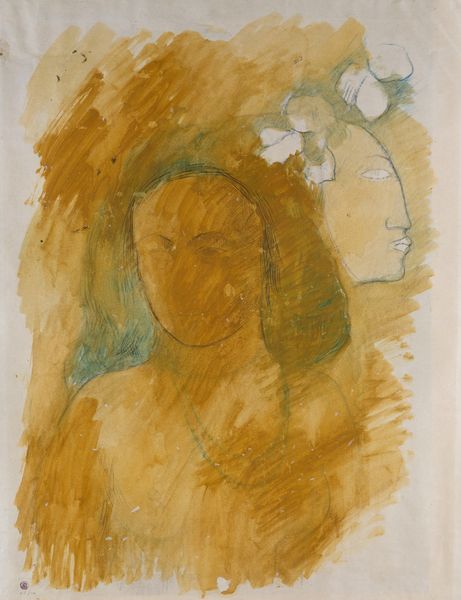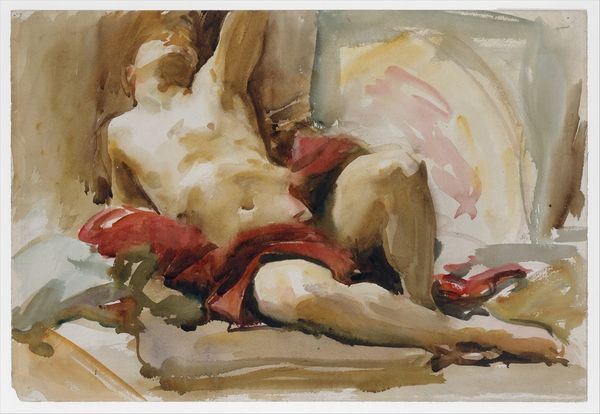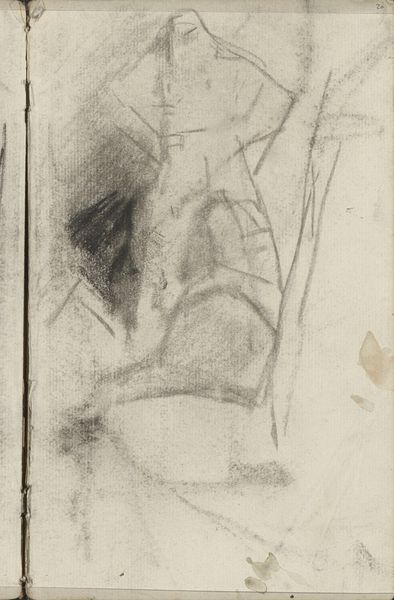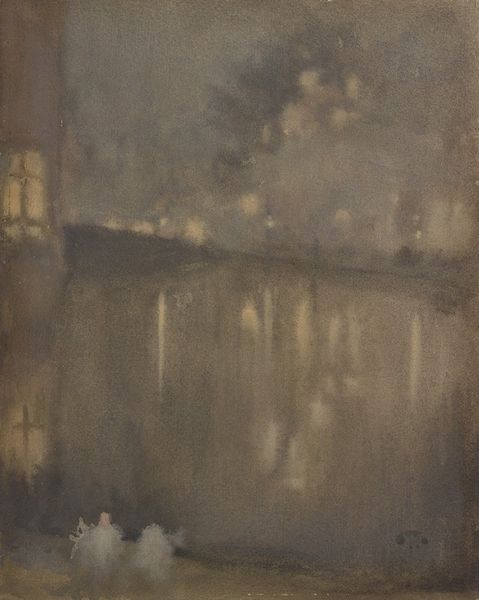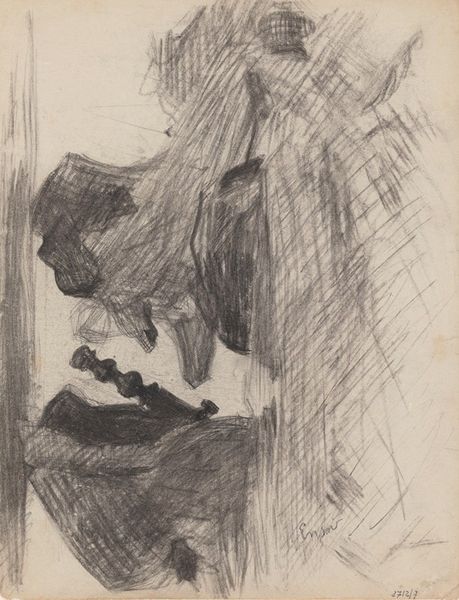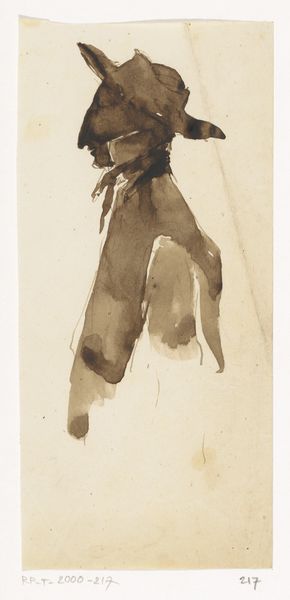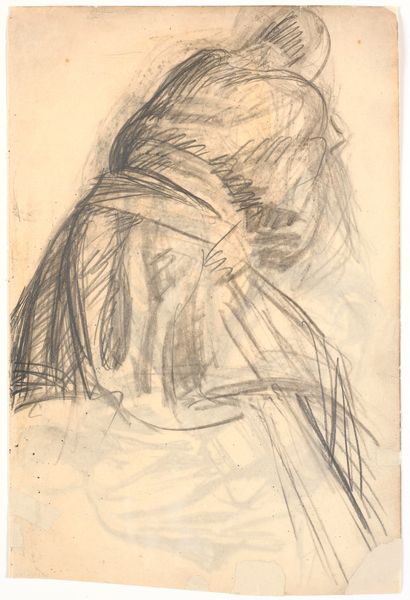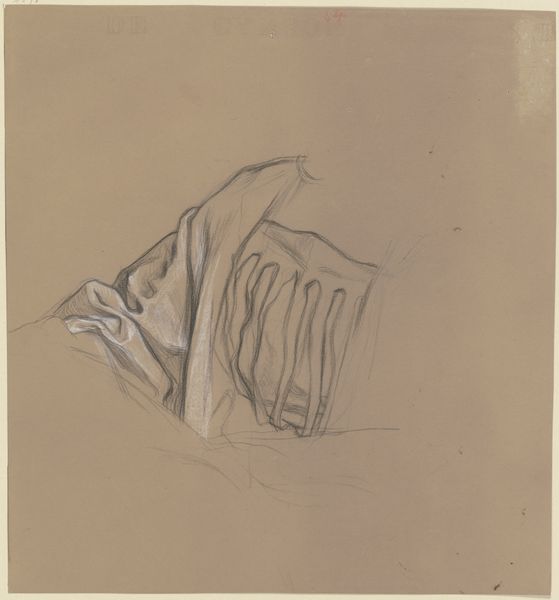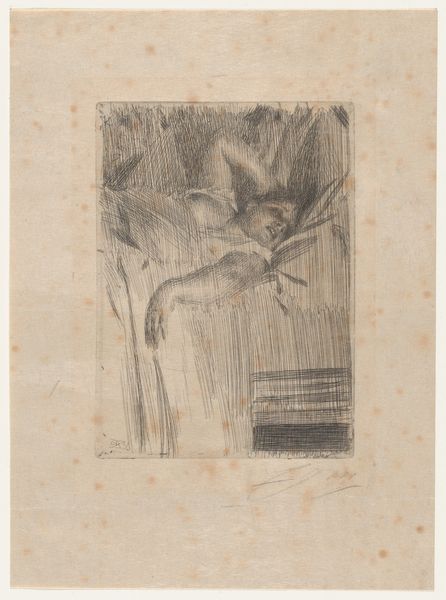
watercolor
#
dutch-golden-age
#
watercolor
#
watercolor
#
realism
Dimensions: height 373 mm, width 200 mm
Copyright: Rijks Museum: Open Domain
Curator: This watercolor still life, dating from roughly 1887 to 1924, is by the Dutch artist Julie de Graag and is held here at the Rijksmuseum. It’s titled “Stilleven (fragment).” Editor: The immediate impression is one of quietude, a contemplative stillness evoked through the soft washes and restricted palette. There's something inherently melancholic, too, perhaps owing to the work’s fragmentary nature. Curator: It’s a realism reminiscent of the Dutch Golden Age masters, echoing their intimate domestic scenes and quiet depictions of everyday objects, though rendered in a more modern style. De Graag evokes a sense of familiarity, connecting us with those long artistic traditions. Editor: Note how De Graag carefully balances the forms. The verticality of the silver vessel is grounded by the more squat form of the ceramic pot, while the crumpled fabric adds both texture and depth to the composition. The light source appears to originate from the upper-left, which softly models the objects while obscuring the objects. Curator: The objects themselves – the gleaming beaker and earthy vase – are timeless artifacts carrying layers of human connection and function. I can almost envision hands polishing the beaker and carefully arranging flowers in the earthenware pot. Editor: Indeed, the artist uses the principles of repetition and variation, creating visual interest without employing many colors. Look at the delicate use of gradated tonality that creates volume while adding complexity through its semiotic associations. Curator: The fragment’s incomplete status gives a tantalizing glimpse into what was left behind or forgotten. Fragments carry within them the allure of wholeness, implying that the visible world is never complete unto itself. Editor: An evocative encounter between material form and atmospheric effect. I’m struck again by how expertly De Graag captures the quiet resonance of mundane things, giving the composition the air of impermanence through color and space. Curator: I agree, and viewing this delicate fragment makes you reconsider what remains and resonates in your own collection of memories. Editor: It is a striking balance, a study in composition, light, and emotion all interwoven to affect one’s perception of visual expression.
Comments
No comments
Be the first to comment and join the conversation on the ultimate creative platform.


